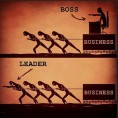What does it take to successfully communicate with and manage members of various generations – noting that at least four (from Millennials to Baby Boomers) are now present in the workplace? To find out, we asked Dr. Alexis Ambramson, a leading aging consultant and speaker, as the author of The Caregivers Survival Handbook, Home Safety for Seniors, The 55+ Fact Book. Read on get more insights, and for more details on how to engage and inspire others in the workplace, also be sure to check out our own bestselling guide, Millennial Marketing: Bridging the Generation Gap.
Q: Tell us a bit about what you do?
A: I focus on the cutting edge business and lifestyle trends influencing the 109 million Americans over the age of 50. Older people are more active and vibrant than ever before, responsible for 50% of all discretionary income and spending upwards of $3 trillion every year on consumer-related services – my job is to teach companies how to attract, and retain, those consumers.
Q: Why did you choose the field of aging? And how has it changed since you first started?
A: I chose the field of aging early on because I have always felt a kindred spirit towards the older generation. I spent a great deal of time with my grandparents when I was growing up and found my experiences with them to be life changing. While others were putting the older generation out to pasture and marginalizing their role in our society I was doing everything I could to learn from their experience and wisdom. I find my work extremely rewarding because, quite frankly, this is still an absolutely untapped market – the opportunities within the field are infinite. With the growing demographics and the true “Global Graying” on the way – those who have chosen to be in the field of aging are ripe for success – both from a personal and professional aspect.
The field of aging has changed dramatically since I first started out in the industry many moons ago. As our society continues to age more and more people are entering the field on all levels – be it healthcare, technology, sales, etc. This influx of new blood into the field is very positive but there are also some real challenges associated with the overall growth. Due to the fact that there are SO many noble (and lucrative) opportunities, both from a “B to B” and “B to C” standpoint, we are attracting a ton of candidates that lack the experience and education needed to succeed. I’m of the opinion that we need to put some parameters around the field so that we have high standards and can effectively regulate the sector in an effort to deter unqualified individuals who simply want to wake up tomorrow morning and proclaim they are a “gerontologist” just so they can make a quick buck.
Q: Are companies responding to the needs, dreams, desires and wants of this market?
As one of the pioneers in the field – having been a gerontologist for over two decades – it has taken a LONG time to get marketers to realize that the “Silver Tsunami” is truly upon us and the 50+ generation MUST be paid attention to by the government, private companies, non-profit organizations, etc. I’ve had to spend a ton of my time screaming from the rooftops about the impact of this tremendous demographic paradigm shift and trying to get people to let go of the myths associated with aging and fully embrace their own futures. So many organizations just want to put this whole segment of society to the side and I’ve travelled around the world for years, decades actually, working tirelessly to get businesses and individuals to understand – if for no other reason than the financial impact – that this is a viable segment that folks need to stop sidelining and start empowering.
Businesses, foundations and agencies in a wide variety of industries including fashion, fitness, travel, healthcare, transportation, retail, automobile, relationship and real estate need to be prepared to offer the services demanded by this growing population who are already outspending other generations by an estimated $400 billion each year on consumer goods & services. So even while the escalating number of retirees may begin to strain government resources, they will provide enormous money making opportunities for those who are offering 50+ friendly products and services.
Q: What constitutes a Baby Boomer in your mind? And what notable characteristics, behaviors, and perspectives most define this generation from your standpoint?
A: Baby Boomers are a designated group of people who were born between 1946 and 1964. They are labeled as ‘Baby Boomers’ because during this period of time there was a statistically significant increase in the number of births that occurred. The baby boomer generation, made up of a staggering 77 million Americans, is rivaled in size only by Millennials – many of whom are the children of boomers. The Millennial generation, born from 1980 through 1999, similarly includes approximately 77 million Americans. Baby boomers are one of the largest generations in U.S. history and they have shaped the cultural landscape for more than 60 years. The Boomer generations will continue to have a significant influence on our society as they move into their so-called ‘retirement’ years.
Probably the most defining characteristic of the baby boomer market is that there are few general defining characteristics that apply to this group. But here are a few ways Boomers have differentiated themselves from other cohorts:
- Baby Boomers have often been categorized by the significant social changes they have created. Boomers have always been known for going against social norms, and some of their actions included experimentation with drugs, a liberal expression of their sexuality, the renewed interest in women’s rights, recognition of environmental concerns and a preference for rock and roll music. All of these, among others, shaped and defined the Baby Boomers’ generational identity and they are often associated with a rejection or redefinition of traditional values.
- Just as boomers revolutionized our society in their youth, they’re expected to revolutionize what it means to age in America. Most experts who study this demographic agree that the way boomers will live out their retirement years will look very different from the historical, stereotypical image of senior citizens. Medical advances will enable boomers to live longer than any generation that’s come before them, so rather than retiring into the background of our society, more boomers will remain vibrant and active throughout their retirement years than was the case of previous generations.
- Many boomers are pursuing second careers or taking on part-time jobs, partly out of financial necessity but also in part because boomers likely derived much satisfaction from their careers and professional accomplishments. Just because they’ve reached traditional retirement age doesn’t mean those opportunities to learn, earn and grow have to stop. Boomers who want to continue contributing to society but not necessarily in a traditional job setting should embrace the opportunity to pass on what they’ve learned to younger generations by volunteering.
- Boomers are savvier, more discerning consumers than previous generations of seniors. Their size and buying power has prompted companies to ramp up production of consumer goods, which has multiplied their options for everything from cars to socks. And they typically have had money to spend on these options given that they’re more likely than their parents’ and grandparents’ generations to live in dual-income households, creating more income to spend on the myriad consumer goods at their disposal. These dynamics shaped boomers into status-conscious, sophisticated shoppers.
Q: What are some of the most important trends and happenings we’re seeing emerge amongst baby boomers?
A: The Baby Boomer generation came of age during a period of significant social change, and as they’ve matured, they’ve changed the way we look at aging. Below are four trends developing among Baby Boomers as they blaze a new path into their senior years:
- Housing Market: Between now and 2030, Boomers will have a significant impact on the housing market. As Boomers add 30 million people to the senior population, demands for affordable, accessible housing will increase. This cohort will also be contributing to the housing inventory, as they release a net of approximately 26 million homes between 2010 and 2030.
- Car Buying: Many Baby Boomers took a financial hit during the Great Recession, but they haven’t stopped spending—especially on automobiles. People age 50 and older account for more than three out of every five (62%) new car purchases. This is up from 39% in 2001.
- Entrepreneurship: A growing number of Baby Boomers are striking out on their own professionally. Data shows that 59% of Boomers have chosen to work independently and just 23% are doing so because they lost their job. More than three quarters say they enjoy this path because of the flexibility (79%) and because they believe doing what they love is more important than the amount they earn (77%).
- Volunteering: While for-profits may struggle to leverage the value of aging Baby Boomers, they are highly sought after by non-profits. The appeal is that Baby Boomers are more educated than previous generations and have well-honed skills and years of work and life experience. Non-profits are courting Boomers by offering skills-based opportunities and flexibility—including nontraditional hours or projects that don’t need to be completed in the office.
Q: What would be a few unexpected things people would never guess about members of this generation?
A: This new generation of Baby Boomers experienced an unprecedented level of economic growth and prosperity throughout their lifetime. They entered the world in a time of relative hardship, but thanks to education, government subsidies, rising property prices and technological advancements, they have emerged as a successful and affluent generation. Many baby boomers are now settling into retirement, with many more luxuries and comforts in their golden years than experienced by generations before them.
- Nearly a third of Baby Boomers have graduated college: Baby Boomers represent a diverse educational mix. Census data estimates that 28.8% of Baby Boomers have earned a Bachelor’s degree or higher, while another 28.9% have attended some college classes.
- More than half of Baby Boomers support their adult children financially: A 2012 study by the National Center for Policy Analysis found that a surprising 59% of Baby Boomer parents were found to be providing financial support to their adult children, including living expenses, medical bills and paying off loans.
- Baby Boomers are spending less on entertainment and eating out: While they may be spending more on their adult children, Baby Boomers may also be spending less on themselves. From 1990 to 2010, Baby Boomer spending fell in categories such as food, clothing and household furnishings.
- Many Baby Boomers are working longer: Boomers plan to continue working once they are eligible for retirement, despite having an option to stop. In fact, only 11% of baby boomers plan to stop working entirely once they reach retirement age. Four out of five boomers intend to keep working and earning in retirement, and half of boomers plan to launch into an entirely new job or career in retirement.
- About two-thirds of Baby Boomers are married: Some of the Baby Boomer generation may have once celebrated free love, but 65.6% of Boomers today are married. Only 11.7% have never been married, with the rest of today’s Baby Boomers being either divorced (17%), separated (3%) or widowed (2.7%).
- The majority of Baby Boomers are homeowners: Owning a home was a large part of the traditional American Dream embraced by Baby Boomers. According to a study by the National Association of Realtors, nearly 80% of Baby Boomers own their own homes and one out of four owns more than one property.
- Three Baby Boomers have led from the Oval Office: So far, three U.S. Presidents have been Baby Boomers: Bill Clinton, George W. Bush, and our current president, Barack Obama. We’ll have to wait until 2016 to see if the trend continues for another term.
Q: How has this generation changed the world, and what kind of impact has it had on our society?
A: Growing up a Baby Boomer allowed for a life filled with exciting new discoveries and previously unimagined advancements. According to U.S News and World Report here’s a glimpse at the impact, good and bad, this generation has had on the world:
- Career Opportunities: Often times this generation has been equated with people focused on themselves and their careers, valuing their own satisfaction first and foremost. Boomers have sometimes been categorized as obsessed with their individual importance in the world, and always in pursuit of new and better toys. Some people outside of the Boomer ranks may experience a hint of jealousy seeing how incredibly fortunate many Boomers have been, successfully riding the IPO crazes and capitalizing on various bubbles.
- Media Outlets: Baby Boomers were the first generation for which the television became a central part of their lives. They were able to witness news as it happened and enjoy diverse entertainment never before available in such a medium. However, Baby Boomers were also the first to be pervasively bombarded by advertising, which quickly capitalized upon the captive television audience. Everything from what you should wear to how you should smell to what should be on your dinner table was pounded into their receptive, and somewhat defenseless, heads.
- Heavy Debt: Being a Baby Boomer has not always meant wealth or financial security. The credit card economy took root among a generation that preferred to have things now rather than save and wait until they could afford them. The parents of Baby Boomers tended to save up for purchases, while Baby Boomers used credit cards nonstop. Although Boomers enjoy the highest income of any age group, they believe it is harder to get ahead than it was ten years ago. Despite their great strides in the workplace, Boomers rate their overall quality of life as lower than other generations.
- Working Longer and Harder: Job competition is fierce among this group partly due to the sheer number of members, but also because of multiple economic upheavals, changes in the nature of work due to increased automation and movement of some jobs off shore. It is increasingly difficult for those over 50 to find employment. Once they lose or leave a job, it generally takes older workers much longer to secure new positions than their younger counterparts.
Q: How have Boomers changed politically as they’ve aged over time?
A: On the political front, Boomers—like the nation as a whole – have done some partisan switching in recent years. They narrowly favored Obama for president in 2008 (by 50%-49%), then supported Republican congressional candidates by 53%-45% in the 2010 midterm elections, according to election day exit polls. In their core political attitudes about the role of government, they’re more conservative than younger adults and more liberal than older adults, according to a comprehensive 2010 Pew Research report on long term trends in political values by generation.
Q: What’s the best way to capture Baby Boomers’ attention and interact with them these days?
A: The size and buying power of the Baby Boomer and senior demographics are staggering, but for some reason many companies mistakenly underestimate the viability of today’s mature adults. With 77% of the current wealth in the United States being controlled by older adults it is clearly a viable target market. If companies want to reach this unique demographic they need to understand how and why they buy and/or use specific services. Marketing to baby boomers, and seniors, involves establishing a relationship, building trust and providing opportunities for growth, learning and interaction.
50+ sales, marketing and advertising techniques continue to evolve and are changing rapidly. Organizations must put their business intelligence to work here and ask; are Boomers and seniors included as prospective customers in our vertical markets? Companies who ignore the Boomer and senior generations do so at their own peril. They need to recognize that as Americans are aging they are accumulating wealth, and their spending is growing at a pace that’s leaving younger generations far behind. Any company that has a service or product that might appeal to the 50+ consumer, but doesn’t have a strategy for making their offering relevant to this group needs to be prepared for a rough ride over the next twenty years.
Q: What advice would you give businesses or brands hoping to more effectively engage Baby Boomers?
A: As one of the pioneers in the field – having been a Gerontologist for over two decades – it has taken a LONG time to get marketers to realize that the “Silver Tsunami” is truly upon us and the 50+ generation MUST be paid attention to by the government, private companies, non-profit organizations, etc. I’ve had to spend a ton of my time screaming from the rooftops about the impact of this tremendous demographic paradigm shift and trying to get people to let go of the myths associated with aging and fully embrace their own futures. So many organizations just want to put this whole segment of society to the side and I’ve travelled around the world for years (decades) working tirelessly to get businesses and individuals to understand – if for no other reason than the financial impact – that this is a viable segment that folks need to stop sidelining and start empowering.
Businesses, foundations and agencies in a wide variety of industries including fashion, fitness, travel, healthcare, transportation, retail, automobile, relationship and real estate need to be prepared to offer the services demanded by this growing population who are already outspending other generations by an estimated $400 billion each year on consumer goods and services. So even while the escalating number of retirees may begin to strain government resources, they will provide enormous money making opportunities for those who are offering 50+ friendly products and services.
Over the last few years baby boomers and their outlook on retirement has changed considerably due to the economic fluctuations. Despite the faltering economy of the last five years, American older adults are better off than ever, in large part because more seniors, especially older women, are working than in previous decades. According to a 2012 report from the Federal Agency Forum, the number of senior citizens living in poverty has declined from 15 percent to 9 percent since the mid-1970s, while the proportion of older Americans enjoying a “high income” increased from 18 to 31 percent. Older people are more active and vibrant than ever before, responsible for 50% of all discretionary income and spending upwards of $3 trillion every year on consumer-related services.
Businesses, foundations and agencies in a wide variety of industries including fashion, fitness, travel, healthcare, transportation, retail and real estate need to be prepared to offer the services demanded by this growing population who are already outspending other generations by an estimated $400 billion each year on consumer goods & services. So even while the escalating number of retirees may begin to strain government resources, they will provide enormous money-making opportunities for those who are offering 50+ friendly products and services.
Q: What are some of the most effective ways to connect with, market to and speak to members of this generation?
A: Baby Boomers are 25% of the total population and they have $3 trillion of buying power, but less than 5% of total ad dollars are targeted towards this group. In addition, Baby Boomers represent 44% of the US population and 70% of US disposable income. According to a survey by Ad Age, many companies fear reaching out to boomers could age their brand.
Clearly they are a critical component of the US economy, and here are some important tips to remember when trying to connect with this generation:
- They’re Active: 13% of this generation are delaying retirement due to a desire to stay active. When it comes to Baby Boomer marketing keep in mind that they’re not like prior generations – this segment of the population isn’t about to spend the next few decades sitting at home. For instance, nearly half of Boomers actively plan to travel after retirement.
- They’re Mobile – Mobile marketing is no longer limited to Millennials and Generation Xers. In fact, 89% of Boomers have a cell phone, and 13% have completely ditched their landline. Boomers are five times as likely as the general population to own an iPad or another tablet. Don’t limit your mobile messages to younger demographics when Baby Boomer marketing is increasingly mobile.
- They’re Cost Conscious: Prices matter to Baby Boomers. Despite the fact that their disposable income is much higher than your average Millennial, it doesn’t mean they’re out to spend it. 32% of Boomers use the Internet to research deals and sales, and 79% believe store brands are an excellent value for their money. A Baby Boomer marketing strategy should place some emphasis on cost, value and savings.
- Values Matter: While Millennials are often categorized as a highly-value oriented generation, it turns out that Baby Boomers also mix politics and religion into their purchase decisions. 36% of boomers have actively boycotted a brand due to their social or political stance, a higher percentage than among the Silent Generation, Millennials or Generation X. It’s not always about price or value when it comes to baby boomer marketing.
- They’re Social: If you think a strong social media presence is limited to young people, you’ll be shocked to learn that the average Baby Boomer has 124 Facebook friends. Going social is a real option for effective Baby Boomer marketing.
- They’re Sensible: While Millennials react well to humor in brand messaging, Boomers are a little more pragmatic. 80% of purchase decisions among Baby Boomers are driven by practical reasons – 30% higher than among Generation Y. An effective baby boomer marketing strategy might focus more on facts and value-driven language than clever pop-culture references.
Q: What are some hot topics these days in the Baby Boomer space?
- Granparenting: 48 is currently the average age of first-time grandparents, but it’s creeping up each year. 60% of grandparents are Boomer women. Grandparents spend approximately 52 billion annually on their grandchildren.
- Gray Divorce: 66% of the time women report seeking divorces among those aged 40-69. The divorce rate for people 50 and over has more than doubled in the past two decades. Due to longevity many marriages that in previous generations would have ended in death now end in divorce.
- Caregiving: 28% of adult children currently provide care and housing for an aging loved one – the highest percentage of caregivers are women between the ages of 45 and 64. Half of those caring for an aging loved one spend more than 10 percent of their income on caregiving.
- Boomerang Kids: They call it the failure to launch. 36% of the nation’s young adults ages 18 to 31—the so-called Millennial generation—are living in their parents’ home. The majority of “Boomerang Kids” are female and most say that the economy is to blame. Fewer young adults are working than at any time since the 1950s.
- Successful Aging: 133 million Americans – 45% of the population – have at least one chronic disease. By 2025, chronic conditions will affect an estimated 164 million Americans – nearly half (49%) of the population. Health care coverage costs for people with a chronic condition average $6,032 annually.
- Encore Careers: 15% of people between the ages of 44 and 70 are in encore careers and another 31 percent want to join them. An encore career is work in the second half of life that combines continued income with greater personal meaning. Many boomer women say “it’s a second chance at both profit and purpose.”
Q: You also focus on fashion for Baby Boomer women. What made you get interested in that arena?
A: I’m especially interested in “functional” fashion for Baby Boomer women. For some reason, Boomer women (and their Moms!) seem to be positioned as an invisible group of consumers that many brands (especially luxury ones) choose to ignore. I have no idea why designers and retailers don’t care that women age 50 and older control a net worth of $19 trillion and own/control between two-thirds and three-fourths of the nation’s financial wealth, depending on whose statistics you believe. These ladies are also expected to be the beneficiaries of the largest transfer of wealth in our country’s history, in part due to double inheritances from parents and husbands. Between the ages of 55 and 64, they spend more on apparel than any other age group. It just doesn’t seem prudent to marginalize a group that practically rules the world. It’s no secret that due to normal aging our bodies change – and no matter what our “body type,” 50+ women look better in specific styles – so why not create a hip clothing line that’s both fashionable AND functional for the 50+ woman of today.
Q: What have you seen over the last few years about baby boomers and how retirement has been for them in this economy?
A: Despite the faltering economy of the last five years, American older adults are better off than ever, in large part because more seniors, especially older women, are working than in previous decades. According to a 2012 report from the Federal Agency Forum, the number of senior citizens living in poverty has declined from 15 percent to 9 percent since the mid-1970s, while the proportion of older Americans enjoying a “high income” increased from 18 to 31 percent. Older people are more active and vibrant than ever before, responsible for 50% of all discretionary income and spending upwards of $3 trillion every year on consumer-related services. Businesses, foundations and agencies in a wide variety of industries including fashion, fitness, travel, healthcare, transportation, retail and real estate need to be prepared to offer the services demanded by this growing population who are already outspending other generations by an estimated $400 billion each year on consumer goods and services. So even while the escalating number of retirees may begin to strain government resources, they will provide enormous money making opportunities for those who are offering 50+ friendly products and services.
Q: Anything we haven’t discussed that you’d like to add with regard to boomers that individuals or organizations should be aware of?
A: There are three key trends happening in the field of aging that are important to reflect upon:
- Longevity: Older people comprise approximately 13% of our population today, but by the middle of the new century, more than 20% of the American population will be over 65, and 5% will be over 85. Beyond the extension of the human life span, and the likelihood of relatively good health during the later decades of life, there is another important demographic phenomenon, the so-called “bonus years.”Not only are we gaining years at the end of our lives but we are also gaining healthy, productive years in our sixth, seventh or eighth decades. Unfortunately, we do not yet have blueprints or expectations for how these years might be spent. The new “bonus years” challenge us all — as policy-makers, professionals and individuals — to reconsider learning, work, self-expression and service and to try out new paths for growth in the later years.
- Aging in Place: Tomorrow’s mature population will differ from those of past decades. They will enjoy longer lives, better health and more active lifestyles than previous generations. Still, the overwhelming majority will also face a growing and continuous challenge—maintaining their precious independence. Today, according to the AARP, upon retirement, 9 out of 10 seniors stay where they currently are, preferring to grow old in their own homes. But successful “aging in place” demands that one’s home and household products not only provide continued enjoyment and stimulation, it must also support one’s declining functional limitations and enhance one’s quality of life. Refusing to be stigmatized by living in a “home for the Aged” or using “elderly products,” aging Baby Boomers will seek out designs that accommodate rather than discriminate, sympathize rather than stigmatize, and appeal to users of all ages and abilities.
- Financial: The fact that people are now living longer is very desirable and has improved individual welfare. However, there are financial costs of longer life expectancy, for governments through employee retirement plans and social security schemes, for corporate employers with defined-benefit pension plans, for insurers that sell annuities, and for individuals without guaranteed retirement benefits. The financial implications of people living longer than expected (so-called longevity risk) are very large. If average life spans by 2050 were to increase 3 years more than now expected, the already vast cost of aging would increase by 50 percent.
For more on how to effectively manage, lead, and communicate with every generation, be sure to check out Millennial Marketing: Bridging the Generation Gap.














